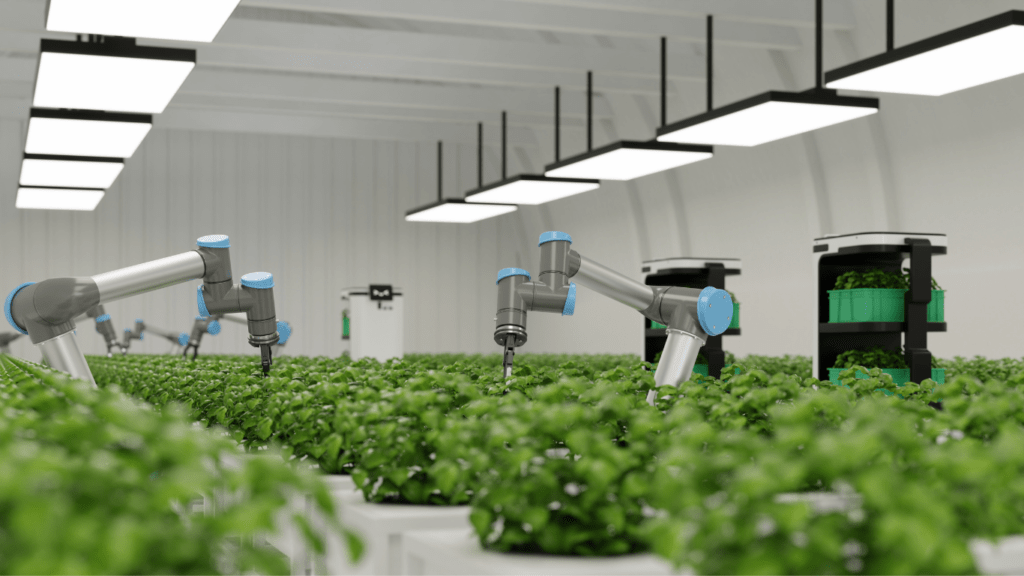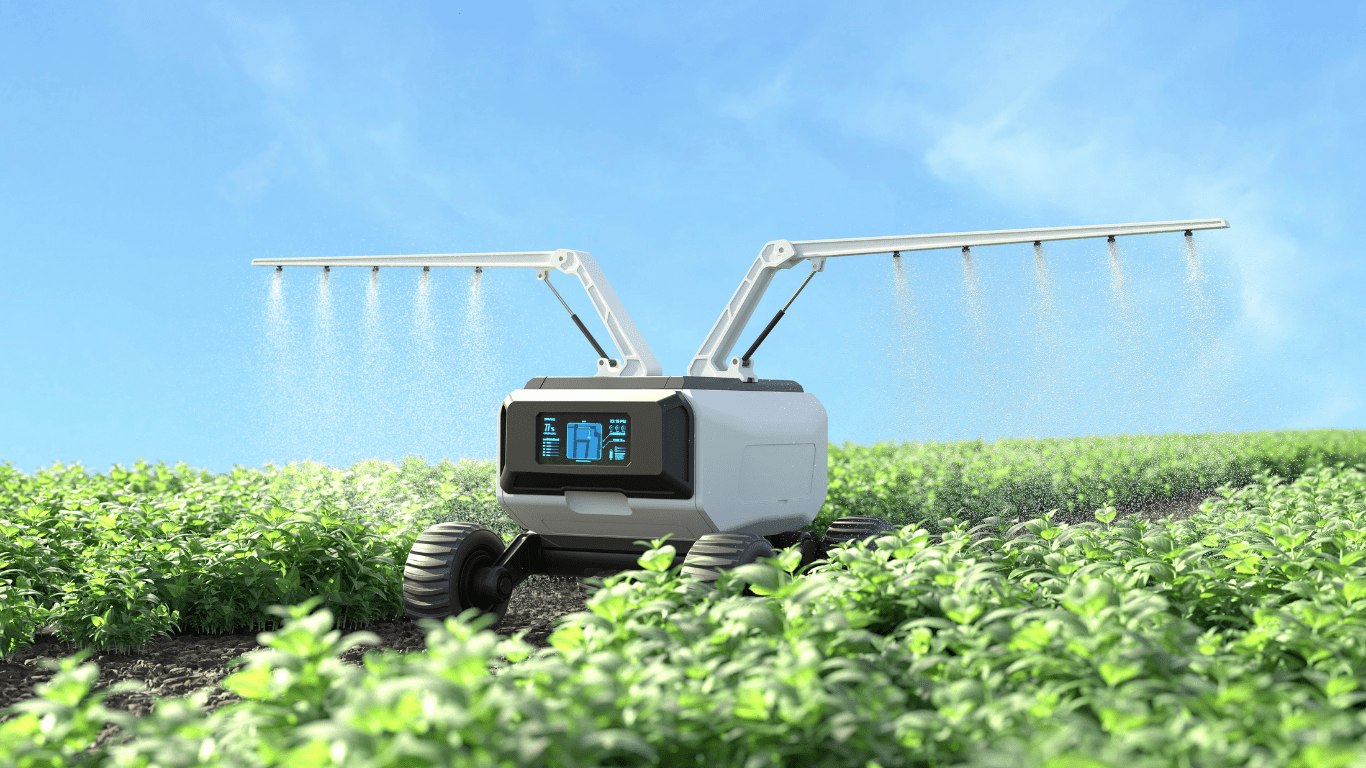Introduction
In the vast fields and orchards where food is grown, a silent revolution is underway: the integration of robotics into harvesting and cultivation processes. Traditionally, agriculture has heavily relied on manual labor, but with technological advancements, robots are becoming increasingly essential. This introduction delves into the rise of robotics in agriculture, showcasing its transformative effects on traditional farming practices and laying the groundwork for a more efficient, sustainable future.
The Rise of Agricultural Robotics
In recent years, the agriculture industry has witnessed a significant shift towards the adoption of robotic technologies. This shift is driven by several factors, including the need to increase efficiency, address labor shortages, and reduce environmental impact. As traditional farming practices struggle to keep pace with growing global food demand and labor challenges, robotics offer a promising solution.
Types of Agricultural Robots:
Agricultural robots come in various forms, each designed to perform specific tasks in the farming process. One of the most common types is the autonomous tractor, equipped with GPS and sensors to navigate fields and perform tasks such as plowing, planting, and spraying with precision and efficiency. Another type is the robotic picker, designed to harvest crops such as fruits and vegetables with speed and accuracy, reducing the reliance on manual labor.
Benefits of Robotic Farming:
The integration of robotics into agriculture offers numerous benefits. Firstly, robots can work tirelessly around the clock, increasing productivity and allowing farmers to maximize their yield. Moreover, robotic technologies enable precise farming practices, reducing the use of fertilizers, pesticides, and water, thus minimizing environmental impact and promoting sustainability. Additionally, by automating repetitive and labor-intensive tasks, robotics help address the challenge of labor shortages in the agriculture sector, especially in regions where manual labor is scarce or expensive.
Precision Farming Techniques
Precision farming, also known as precision agriculture, involves the use of advanced technologies to optimize crop yields and minimize input resources such as water, fertilizer, and pesticides. Robotics play a vital role in precision farming by enabling accurate and efficient execution of various tasks throughout the agricultural cycle.
Integration of Robotics:
Robots are integrated into precision farming practices to perform a wide range of tasks with precision and consistency. For example, autonomous drones equipped with sensors and cameras can monitor crop health and detect areas requiring attention, such as pest infestations or nutrient deficiencies. These drones can also be used for aerial spraying, delivering pesticides or fertilizers precisely where needed, thereby reducing waste and environmental impact.
Accurate Planting and Seeding:
Robotic planters and seeders equipped with advanced sensors and GPS technology can precisely plant seeds at optimal depths and spacing, ensuring uniform crop emergence and maximizing yield potential. By minimizing seed waste and optimizing planting patterns, these robots contribute to overall resource efficiency and cost savings for farmers.
Efficient Irrigation and Nutrient Management:
Robotic irrigation systems use sensors to monitor soil moisture levels and environmental conditions, enabling precise and timely irrigation to ensure optimal crop growth while conserving water. Similarly, automated nutrient management systems can analyze soil samples and apply fertilizers or soil amendments in precise amounts and locations, minimizing waste and environmental runoff.
Real-time Data Analysis:
One of the key advantages of robotics in precision farming is the ability to collect and analyze vast amounts of data in real-time. By continuously monitoring crop health, soil conditions, and weather patterns, robots provide farmers with valuable insights that can inform decision-making and optimize farming practices for improved productivity and sustainability.
Challenges and Limitations
While the integration of robotics into agriculture offers significant potential benefits, there are several challenges and limitations that need to be addressed to realize its full potential.

High Initial Costs:
One of the primary barriers to the widespread adoption of robotic technologies in agriculture is the high initial investment required. The cost of purchasing and implementing robotic systems, including hardware, software, and infrastructure, can be prohibitive for many farmers, particularly small-scale operations. Additionally, ongoing maintenance and upgrades may further add to the total cost of ownership.
Technical Complexity:
Robotic systems in agriculture often involve complex hardware and software components that require specialized knowledge and expertise to operate effectively. Farmers may face challenges in understanding and integrating these technologies into their existing farming practices, leading to potential inefficiencies or errors in operation.
Limited Adaptability:
Another limitation of current robotic systems is their limited adaptability to diverse farming environments and crop types. While robots may excel in performing specific tasks in controlled environments, such as large-scale monoculture farms, they may struggle to navigate and operate effectively in more complex and variable terrain, such as smallholder farms with diverse crop rotations.
Regulatory and Ethical Considerations:
The deployment of robotic technologies in agriculture also raises regulatory and ethical considerations. Questions regarding data privacy, ownership rights, and liability for accidents or damages caused by autonomous systems need to be addressed to ensure responsible and ethical use of these technologies.
Dependency on External Factors:
Robotic systems in agriculture are often dependent on external factors such as weather conditions, satellite connectivity, and access to power sources. Any disruptions or failures in these external factors can affect the performance and reliability of robotic systems, potentially leading to downtime and loss of productivity.
Addressing Challenges and Ongoing Research Efforts
Despite the challenges posed by the adoption of robotic technologies in agriculture, ongoing research and development efforts are underway to address these issues and unlock the full potential of robotics in farming.
Cost Reduction Strategies:
Researchers and technology developers are working on strategies to reduce the cost of robotic systems in agriculture, including the development of more affordable hardware components, leveraging economies of scale through mass production, and exploring alternative business models such as robotics as a service (RaaS) or leasing arrangements.
Improving Accessibility and Usability:
Efforts are being made to improve the accessibility and usability of robotic technologies for farmers of all scales and levels of expertise. This includes developing user-friendly interfaces, providing training and support services, and promoting knowledge-sharing networks to facilitate the adoption and integration of robotics into existing farming practices.
Enhancing Adaptability and Flexibility:
Researchers are exploring ways to enhance the adaptability and flexibility of robotic systems in agriculture to accommodate diverse farming environments and crop types. This includes developing modular and customizable robotic platforms that can be easily configured and adapted to different tasks and conditions, as well as integrating advanced sensing and artificial intelligence technologies to improve decision-making and autonomy.
Regulatory Frameworks and Standards:
Efforts are underway to develop regulatory frameworks and standards to ensure the safe and responsible deployment of robotic technologies in agriculture. This includes addressing issues related to data privacy, security, and liability, as well as establishing guidelines for ethical use and industry best practices.
Advancements in Technology:
Advancements in key enabling technologies such as sensors, actuators, artificial intelligence, and machine learning are driving innovation in robotic systems for agriculture. Researchers are exploring novel approaches to improve the performance, reliability, and efficiency of robotic systems, as well as developing new applications and use cases to address emerging challenges and opportunities in farming.
Future Outlook
The future of agriculture is increasingly intertwined with robotics, with continued advancements in technology poised to revolutionize farming practices and address pressing challenges facing the industry.
Increased Adoption and Integration:
As robotic technologies become more affordable, accessible, and user-friendly, we can expect to see a significant increase in their adoption and integration into mainstream farming operations. From large-scale commercial farms to smallholder operations, robotics will become indispensable tools for improving efficiency, productivity, and sustainability across the agricultural sector.
Customization and Personalization:
Robotic systems will become increasingly customizable and personalized to meet the specific needs and preferences of individual farmers and farming environments. Modular robotic platforms will allow farmers to tailor their systems to perform a wide range of tasks, from planting and harvesting to monitoring and maintenance, optimizing resource allocation and maximizing yields.
Autonomy and Decision-making:
Advancements in artificial intelligence and machine learning will enable robotic systems to operate with greater autonomy and decision-making capabilities. Robots will be able to analyze vast amounts of data in real-time, adapt to changing environmental conditions, and make informed decisions to optimize farming practices and maximize productivity while minimizing resource inputs and environmental impact.
Collaboration and Coordination:
Robotic systems will increasingly collaborate and coordinate with each other and with other farm equipment and infrastructure, forming integrated ecosystems of interconnected devices and sensors. This collaborative approach will enable more efficient and seamless farming operations, with robots working together to perform complex tasks in a coordinated manner.
Sustainability and Resilience:
Robotics will play a key role in promoting sustainability and resilience in agriculture by enabling more precise and efficient use of resources such as water, fertilizer, and pesticides, reducing waste and environmental impact. By optimizing farming practices and minimizing input requirements, robotic systems will help farmers adapt to climate change and mitigate its effects on crop production and food security.
Conclusion
The integration of robotics into agriculture represents a transformative shift in farming practices, with the potential to revolutionize the way we grow and harvest food. Despite challenges such as high initial costs and technical complexities, ongoing research and development efforts are driving innovation and progress in this field.
As robotic technologies become more affordable, accessible, and advanced, we can expect to see increased adoption and integration into farming operations of all scales. From precision planting and harvesting to autonomous monitoring and maintenance, robots will play a crucial role in optimizing resource use, maximizing yields, and promoting sustainability in agriculture.
With continued advancements in artificial intelligence, machine learning, and sensor technologies, robotic systems will become increasingly autonomous, intelligent, and adaptable, enabling farmers to make data-driven decisions and respond dynamically to changing environmental conditions and market demands.
The future of agriculture lies in harnessing the power of robotics to create more efficient, resilient, and sustainable food production systems that can feed a growing global population while preserving our planet for future generations.
Related Content
- Harvesting Robots: Automated Farming in 2023
- 16 Agricultural Robots and Farm Robots You Should Know
- Intelligent robots for fruit harvesting: recent developments and future challenges
Explore Micro2media.com
- Navigating the Evolving Landscape: Top Business IT Trends in 2024
- Revolutionizing Oncology: How AI is Transforming Cancer Treatment
- The Tactile Revolution: How 3D Printing is Ushering in an Era of Sensitive Robots

